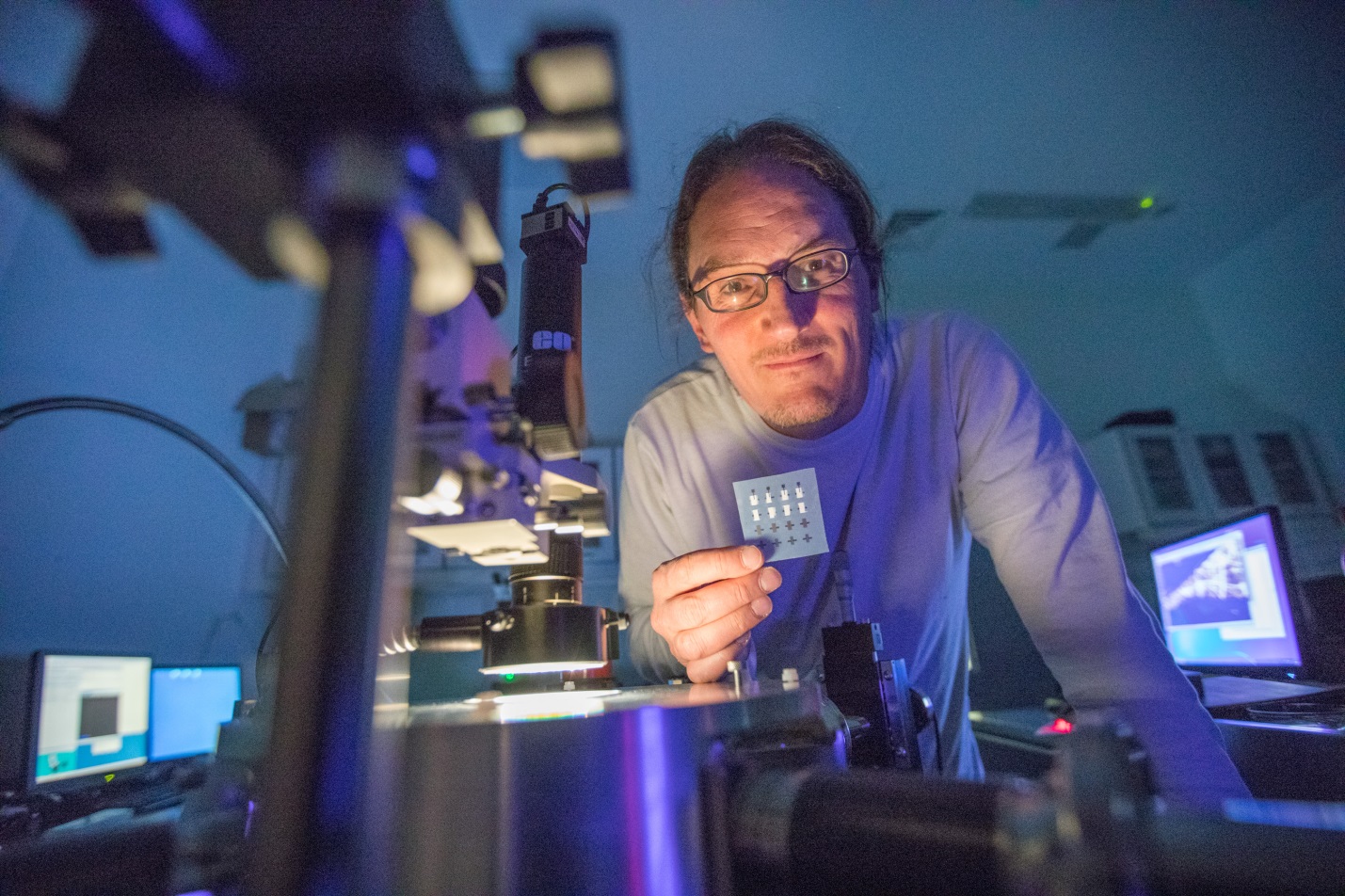By Brian Santo, contributing writer
While video display manufacturers are furiously trying to devise a practical means to manufacture thin-film transistors (TFTs) with the goal of reducing the cost of monitors, TVs, smartphone screens, and the like, a group of researchers in Ireland have just announced a printing process for creating two-dimensional transistors on thin-film materials that could make displays so cheap that they would be literally disposable.
A possible application might be packaging for perishables (e.g., a container of yogurt) that displays an expiration-date countdown. Or white wine labels that alert you when the contents are the optimum temperature for drinking. Or imagine if the wrapping for your 7-Eleven breakfast burrito could alert you when your bus or your Lyft is about to arrive.

AMBER researchers made a major breakthrough in smart printed electronics. Image source: AMBER.
The development of the new thin-film transistors was done at Advanced Materials and BioEngineering Research (AMBER), an organization that focuses on materials sciences; it’s funded by Science Foundation Ireland.
AMBER researchers believe that they’re the first to actually print 2D transistors — they say that they are using a “standard” printing process. They said it was important to show that it was possible to make transistors this way, which is why they did that first, but they seem certain that they’ll be able to use the same process to build solar cells, LEDs, and other devices.
They described their transistors as vertically stacked, with graphene source, drain, and gate electrodes, a transition metal dichalcogenide channel, and a boron nitride separator. The description comes from the summary of a paper recently published in the journal Science.
The specific chalcogenide that AMBER said it’s using is tungsten diselenide. It was selected because it has a high charge-carrier mobility.
The transistors rely on electrolytic gating with ionic liquids, which the AMBER researchers said leads to higher operating currents than achieved with comparable organic TFTs. Electrolytic gating has only recently been proposed for oxide thin films. (Selenium is a chalcogen — chalcogens are also known as the oxygen family).
The upshot is that the materials that AMBER has chosen for its printed TFT devices carry higher currents than most other TFTs at relatively low drive voltages.
There are a number of other potential applications for TFT-based displays that may end up as cheap as AMBER promises. AMBER imagines printing interactive smart food and drug labels or using them in next-generation banknote security and e-passports.
The future is arriving fast.
Advertisement
Learn more about Electronic Products Magazine





